IZIP E3 Dash Electric Bike Review Part 1 – Pictures & Specs
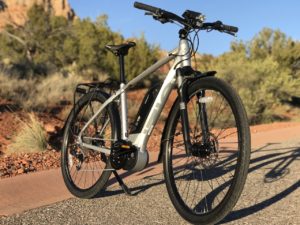 The fast and versatile 2017 IZIP E3 Dash eBike has arrived for testing and review.
The fast and versatile 2017 IZIP E3 Dash eBike has arrived for testing and review.
This 350 watt mid-drive speed pedelec (up to 28 mph) commuter style eBike has a smooth ride with a healthy assortment of accessories for $2,599.
In this first part of the review you will get a detailed look at this bike with a BUNCH of pictures and the specifications.
Part 2 of the IZIP E3 Dash review will give you info on the ride characteristics, results from the range test, pros, cons, and overall thoughts on this eBike.
Alright, let’s take a closer look at the IZIP E3 Dash!
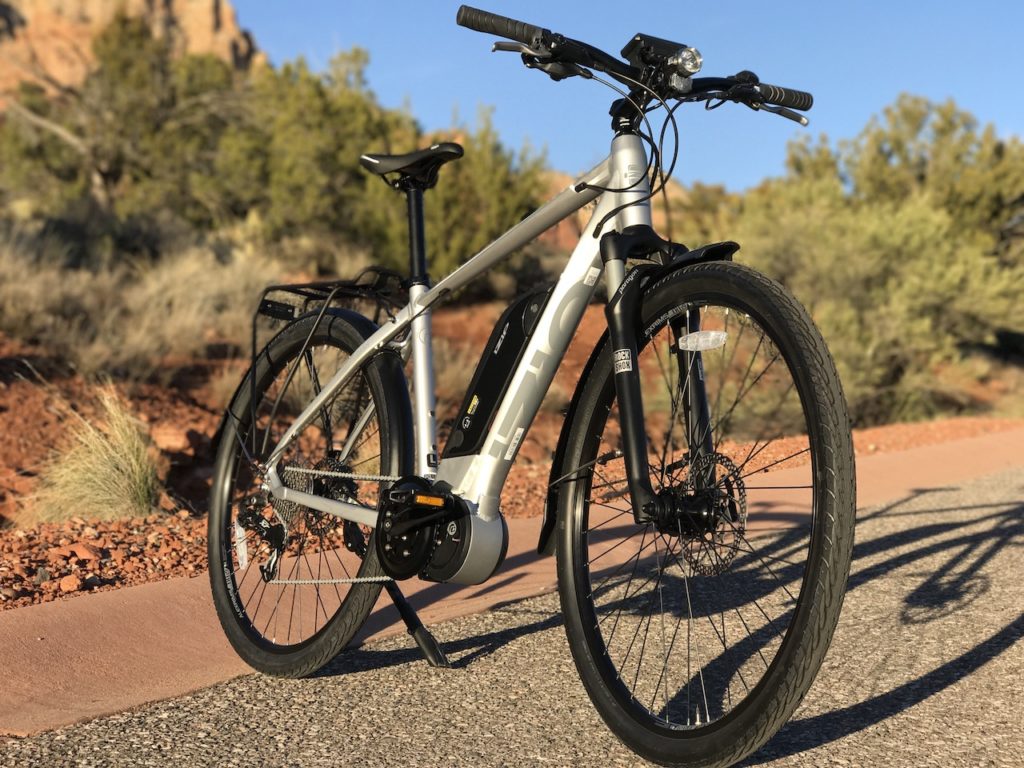
The IZIP E3 Dash is ready for flying around town with it’s max assist speed of 28 mph. It can also be a versatile touring eBike with its component and accessory spec.
To start thing off we will take a closer look at the 6061 aluminum frame that has some uniquely shaped hydroformed tubing.
The headtube junction features smoothed welds for a very clean look and the FSA zero stack integrated headset is also a nice touch for a minimalist appearance.
The frame also features a lot of internal cable routing to add to the clean look.
Here’s a look at the seat tube junction with solid aluminum welds. You can also see the internal cable routing exiting the triangular shaped top tube and the rear rack attachment at the seat stays.
The IZIP E3 Dash is a Class 3 electric bike per California law which is a speed pedelec providing pedal assist up to 28 mph.
A RockShox Paragon suspension fork with 65mm (2.5″) travel is spec’ed on the front to smooth out rough roads and SKS fenders with mudflaps are spec’ed front and rear.
The RockShox Paragon fork also has a lockout dial for a more efficient ride on smoother roads. This prevents the fork from bobbing up and down when you stand out of the saddle and pedal hard.
The 48V 8.7ah (417 Wh) lithium battery is mounted on the downtube of the frame providing a low and centered weight distribution, which is good for overall bike handling. The battery pack lock and charging port is located on the right side of the bike. The battery can be charged on or off the bike.
On the left side is the on/off button and battery level indicator towards the bottom of the pack. Notice the frame tubing and how it blends with the battery pack form to create a cohesive look.
The battery is removed by unlocking it from the frame with the supplied key and sliding the pack to the side off of the frame mount shown here. The 2 supplied keys can fit an ABUS lock so that you have the same key for the battery and bike lock.
Here’s a look at the frame after the battery pack has been removed. Note how the downtube has been formed to create a flat surface for the battery pack.
The battery can be charged on or off the bike and the charging port is on right side of the battery pack. The charger is about the size of a laptop charger and it takes 4 to 6 hours to charge an empty battery.
The battery pack weighs 5.9 pounds.
Wide alloy platform pedals provide a solid grip.
A Currie Electro-Drive 350W mid-drive motor provides the pedal assist up to 28 mph and it has a peak torque of 73 Nm. This pedal assist system uses a cadence sensor and wheel speed sensor.
And here is a look at the left side of the 350 watt mid-drive motor.
A SRAM X7 rear derailleur shifts through the 10 speed Shimano 11-32T cogset. A 142mm wide x 12mm diameter rear thru axle provides for solid side to side stiffness of the rear wheel.
Shimano M355 hydraulic discs brakes are used front and rear. The front disc is a 180mm diameter rotor. These hydraulic brakes have a very solid feel with progressive modulation.
Here is the rear Shimano M355 hydraulic disc brake with 160mm rotor. You can also see the kickstand, rear rack, and fender attachments to the frame.
The Kenda Kwick Bitumen 700x45c tires have an efficient road tread with channeling to dissipate water.
In the center of the handlebar is the LCD display that shows the pedal assist level (there are 4 levels), speedometer, odometer, trip odometer, battery level, and estimated range! The estimated range is a cool feature because it will estimate your range remaining based on the current battery level and what pedal assist level you are in.
The display has a backlit for good visibility both day and night.
The control pad on the left side of the handlebar adjusts the pedal assist levels (+ -), cycles through the display setting, turns the lights on/off, and turns the bike on/off.
The IZIP E3 Dash comes stock as a pedal assist only eBike but the Boost Pad can be added for an additional $50 and it provides a throttle option in addition to the pedal assist.
Here’s a look at the Shimano M365 hydraulic brake lever and the SRAM X7 rear shifter. The reach of the brake levers can be adjusted with an allen wrench to fit your hand size properly.
Here’s a look at the paddles of the SRAM X7 10 speed shifter and the Velo dual density lock on grip. The grips have a solid feel with a larger platform at the ends.
IZIP did a nice job accessorizing the E3 Dash and the front light is one of the highlights as it does a good job of lighting up the road with a wide beam. The front and rear lights run off of the bike’s battery pack so you don’t have to worry about charging a light battery separately.
The rear rack will work with traditional bike bags and panniers to carry cargo on your daily commute or ride in the country.
The rear taillight fits well on the back of the rack and it runs off of the bike’s battery pack. You can also see the full coverage SKS rear fender with mudflap.
The IZIP saddle has a performance style profile with a cut out relief in the center section.
IZIP E3 Dash Electric Bike Specifications
Frame: Double butted 6061 aluminium frame with rack, lock, and fender bosses
Fork: RockShox Paragon suspension fork with 65mm travel and lockout dial
Motor: Currie Electro-Drive® Centerdrive 350W with 73Nm of peak torque
Battery: 46V 8.7Ah (417 watt hour) lithium battery. The battery weighs 5.9 pounds. The battery lock key can work with an ABUS lock.
Assist Options: 4 pedal assist levels. Cadence sensor pedal assist. Option for Boost Control (throttle up to 20 mph) for additional $50.
Speed: Pedal assist (no throttle) up to 28 mph which makes this a Class 3 eBike
Display: Large LCD display with information on: pedal assist level (there are 4 levels), speedometer, odometer, trip odometer, battery level, and estimated range. Backlit for good visibility both day and night.
Drivetrain: 42T chainring with Shimano 11-32T 10-speed cogset. SRAM X7 10 speed shifter & rear derailleur
Brakeset: Shimano M355 hydraulic disc brakes, 180mm front rotor and 160mm rear rotor
Tires: Kenda Kwick Bitumen 700x45c
Sizes: Small 15″ frame, Medium 17″ frame, Large 19″ frame
Accessories: Kickstand, fenders, rack, front and rear lights
Colors: Silver
Weight: 53.8 pounds. 47.9 pounds with the battery removed.
Price: $2,599 USD at the time of this review
Here is a link to the specifications page of the IZIP E3 Dash electric bike.
Now checkout part 2 of the IZIP E3 Dash review with info on the ride characteristics, the range test, pros, cons, and overall thoughts!
-Pete
Review Note: Each company pays a fee for a review on Electric Bike Report because of the considerable amount of time that it takes to provide an in-depth review of each eBike. A lot of time is spent on the full range test with distance & elevation profile, the wide variety of detailed pictures, in-depth video, and the write up with the specifications, ride characteristics, pros, cons, and overall thoughts. The reviews on Electric Bike Report are focused on providing you with a detailed “virtual” look at each eBike to help you determine if it is the eBike for you or not.
P.S. Don’t forget to join the Electric Bike Report community for updates from the electric bike world, plus ebike riding and maintenance tips!
Reader Interactions
Comments
Trackbacks
-
[…] Make sure you check out part 1 of this review with large pictures and specifications to get a detailed look at this e-bike. […]
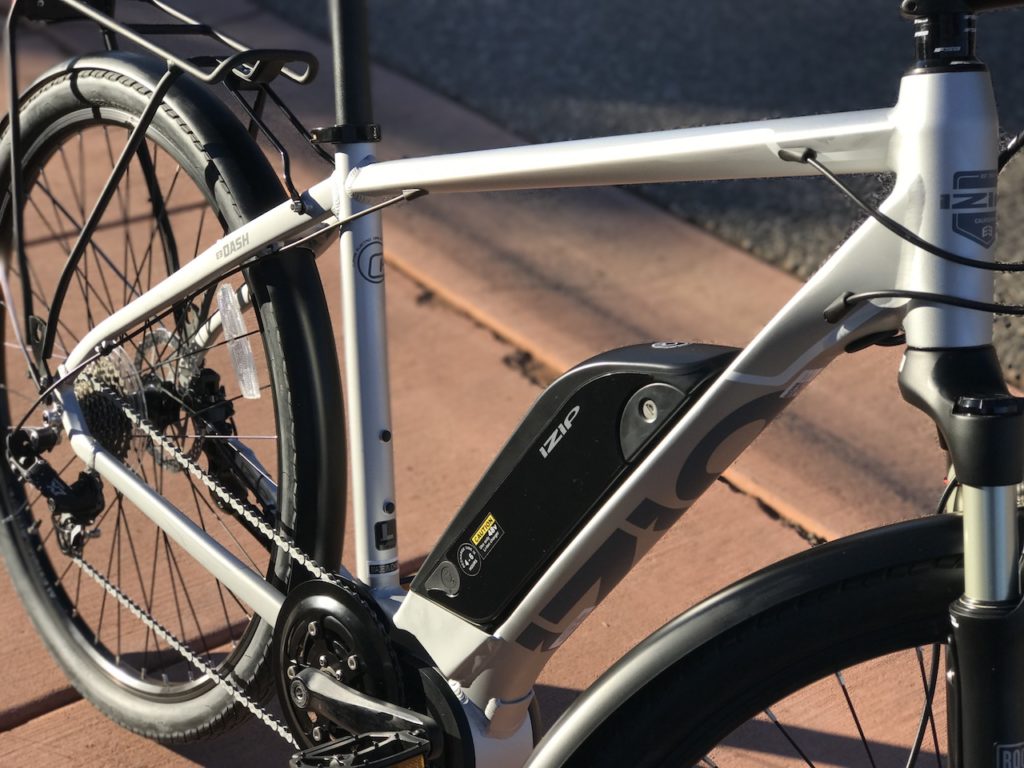
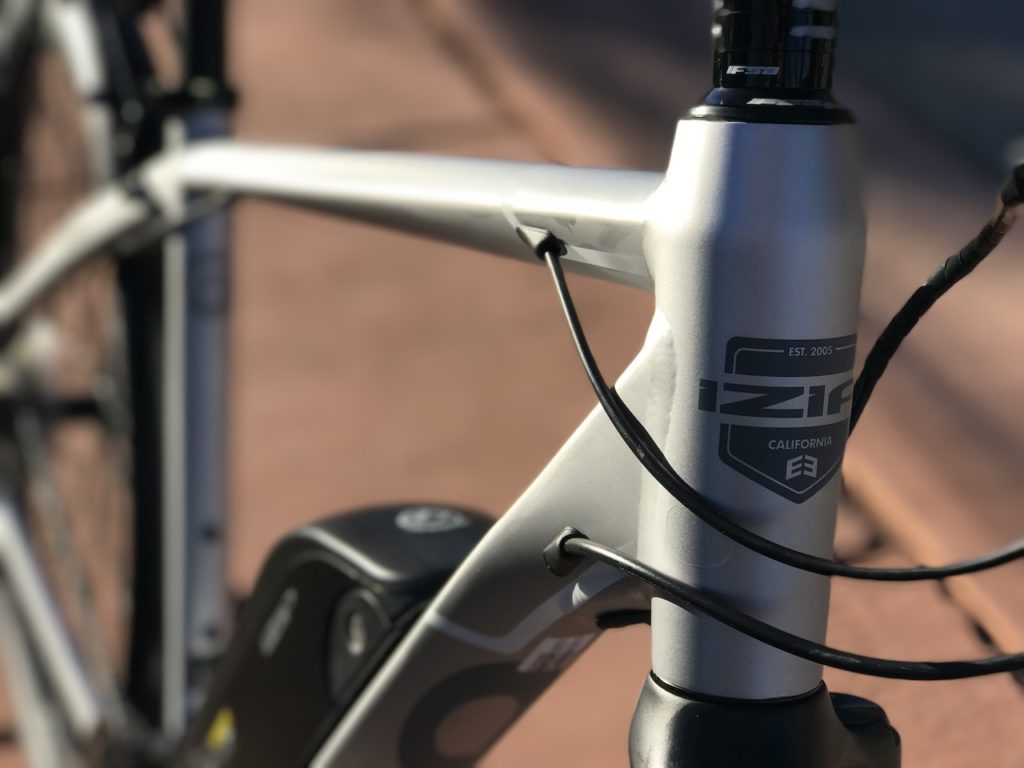
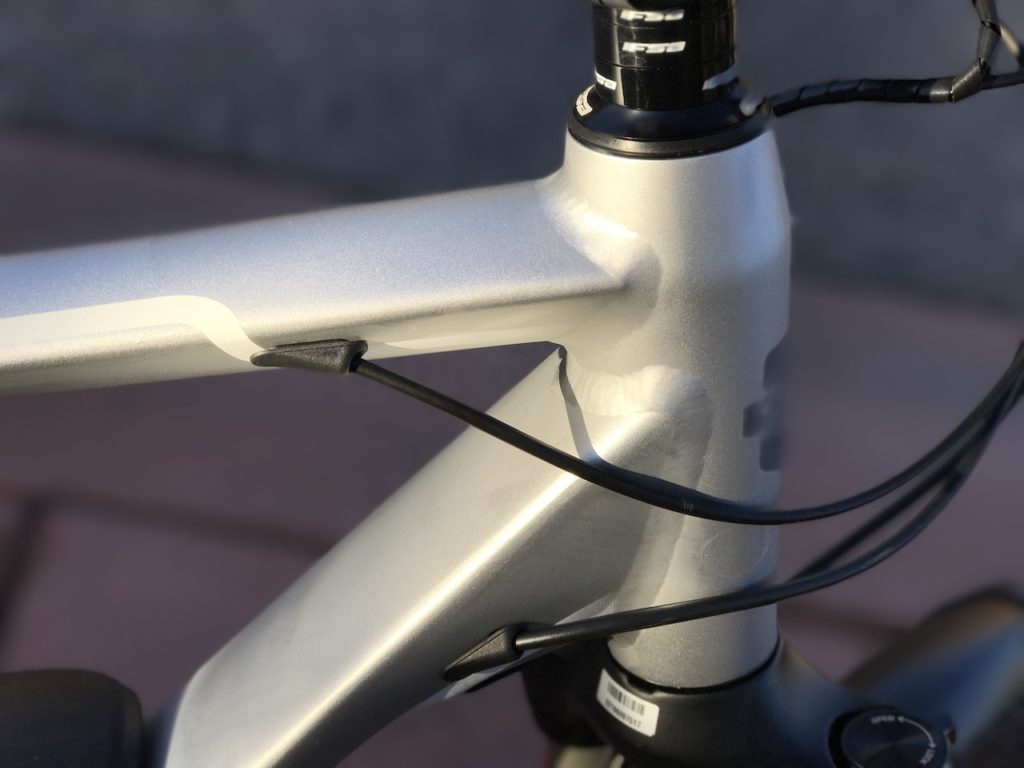
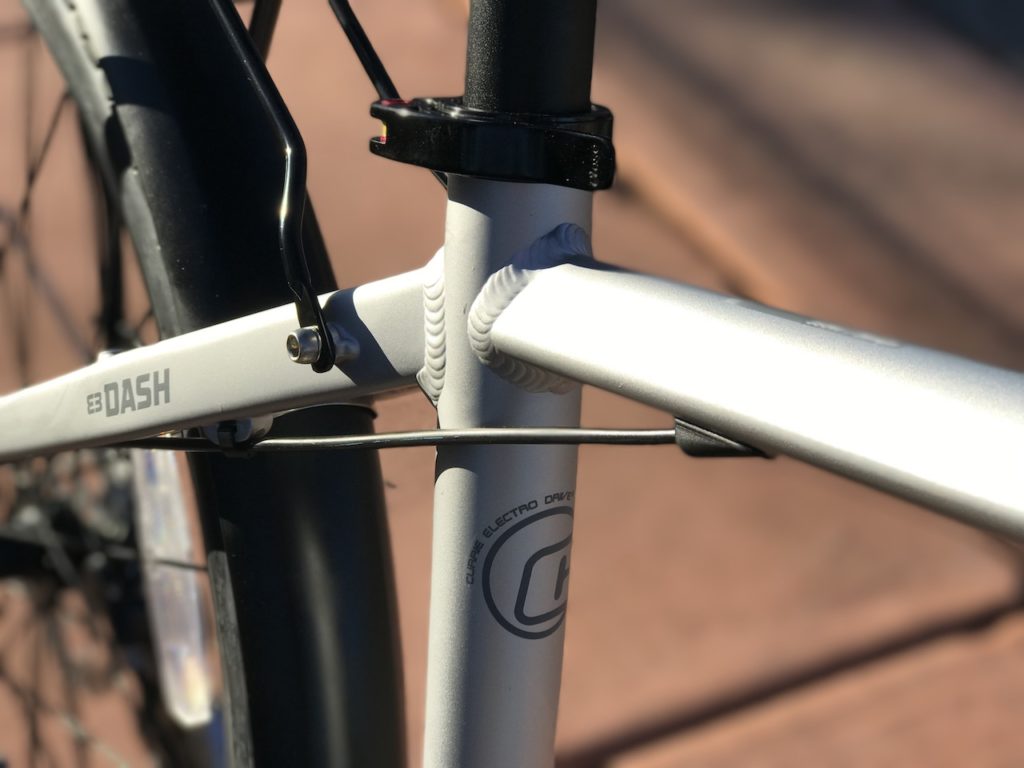
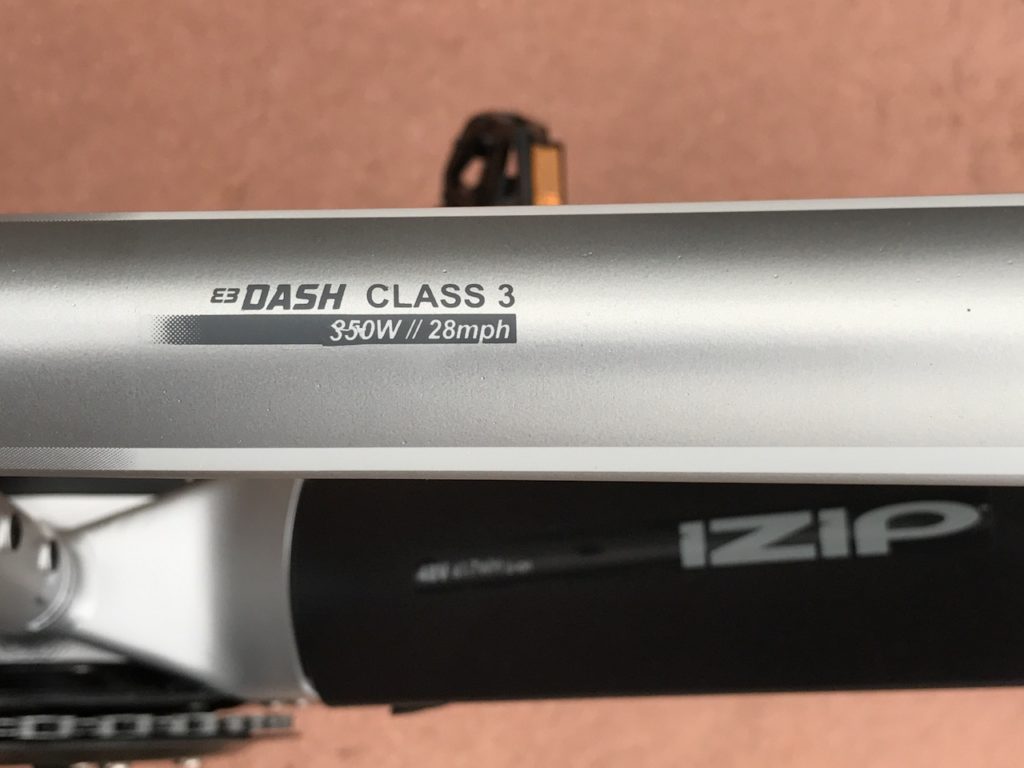
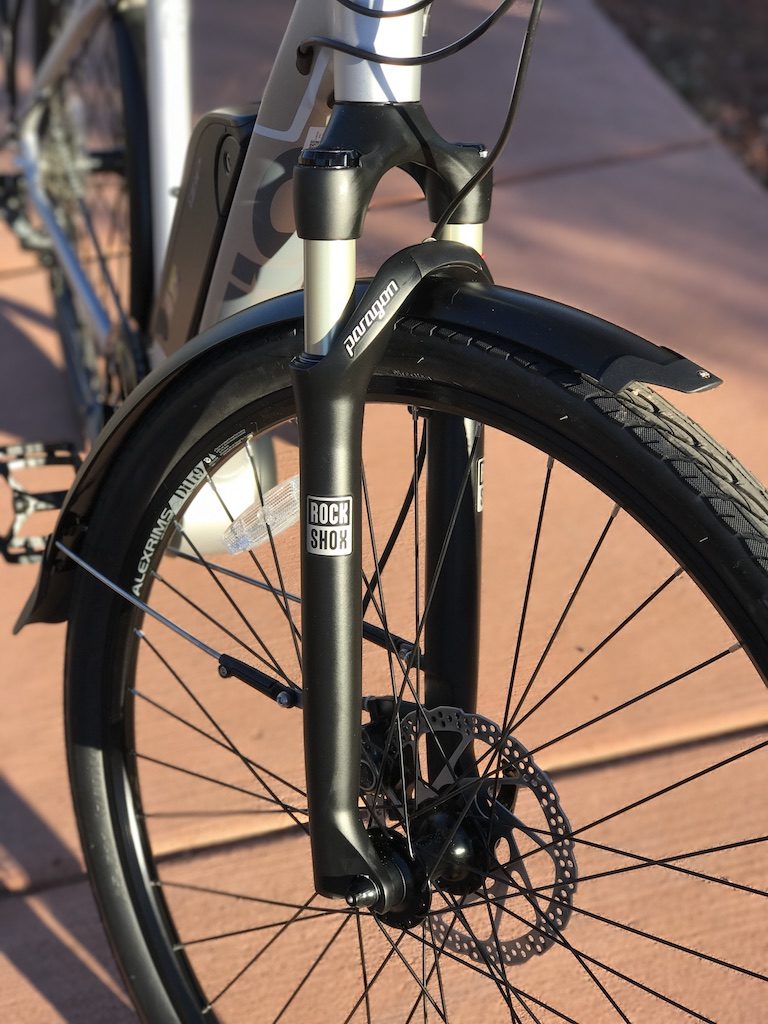
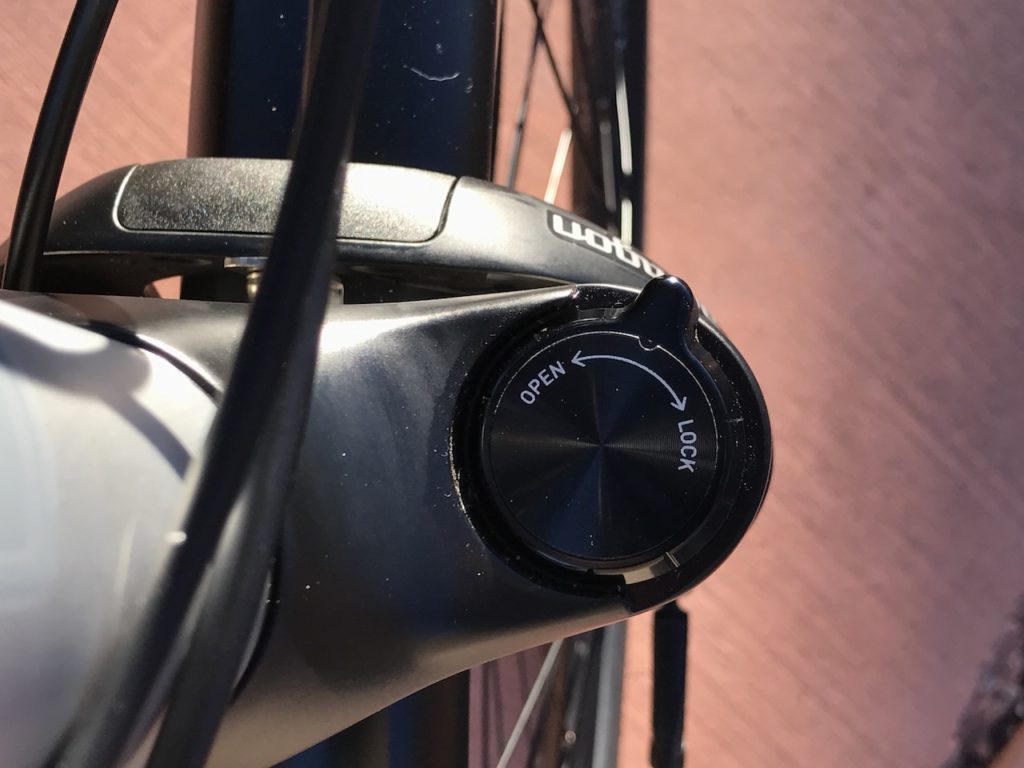
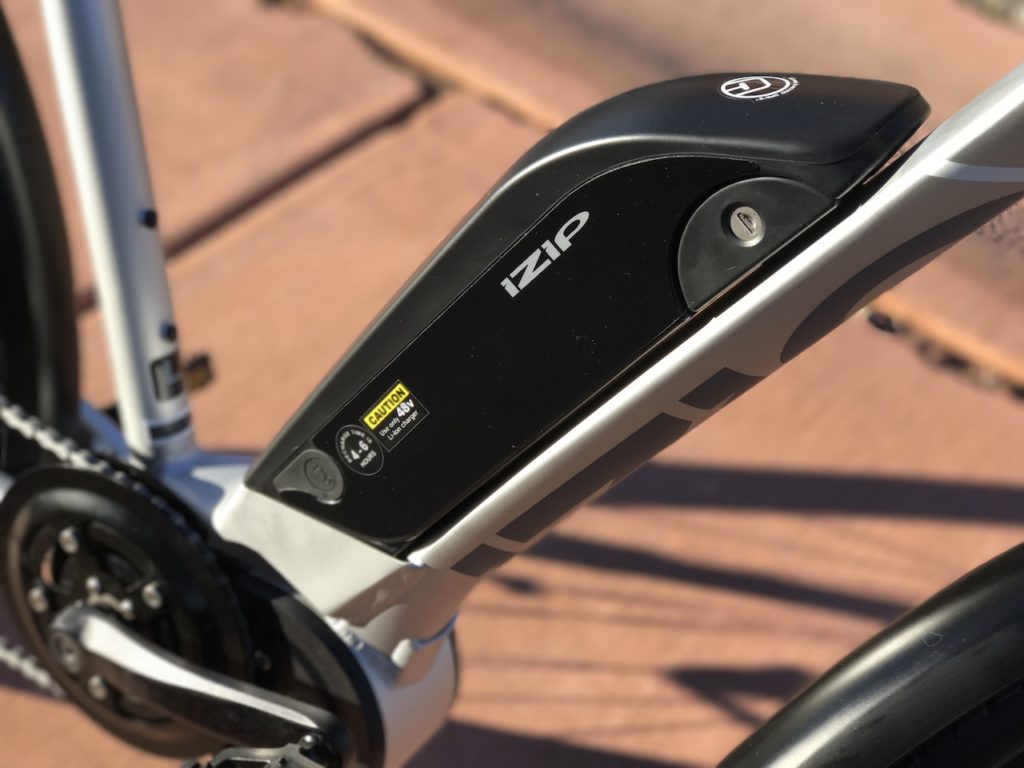
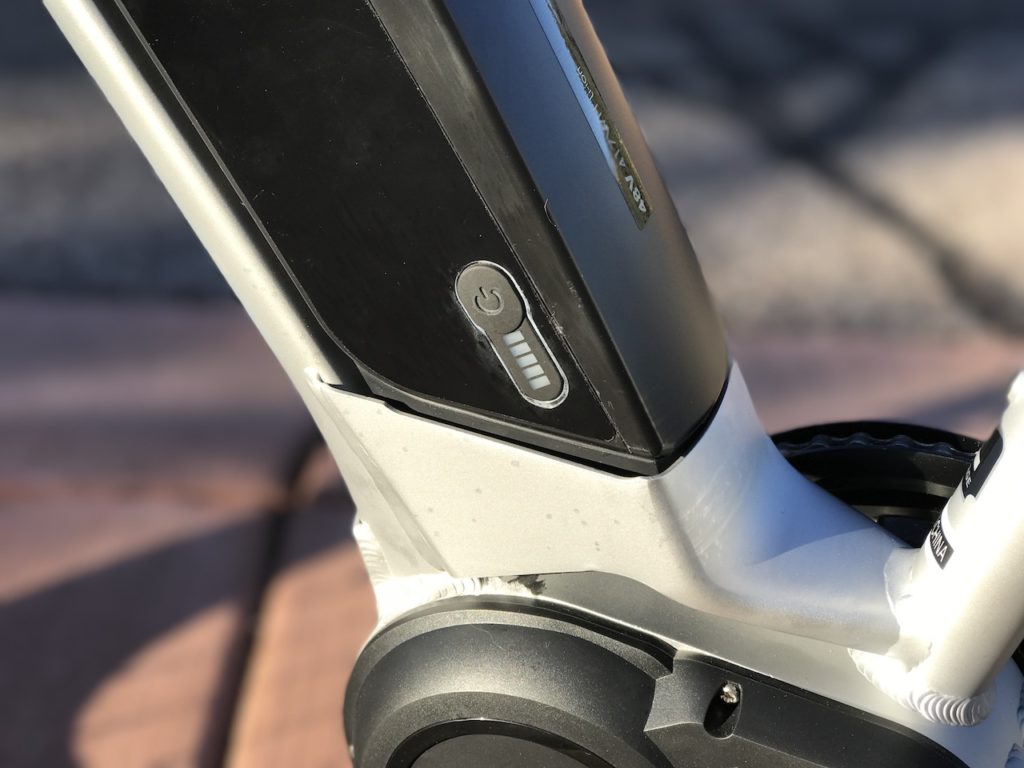
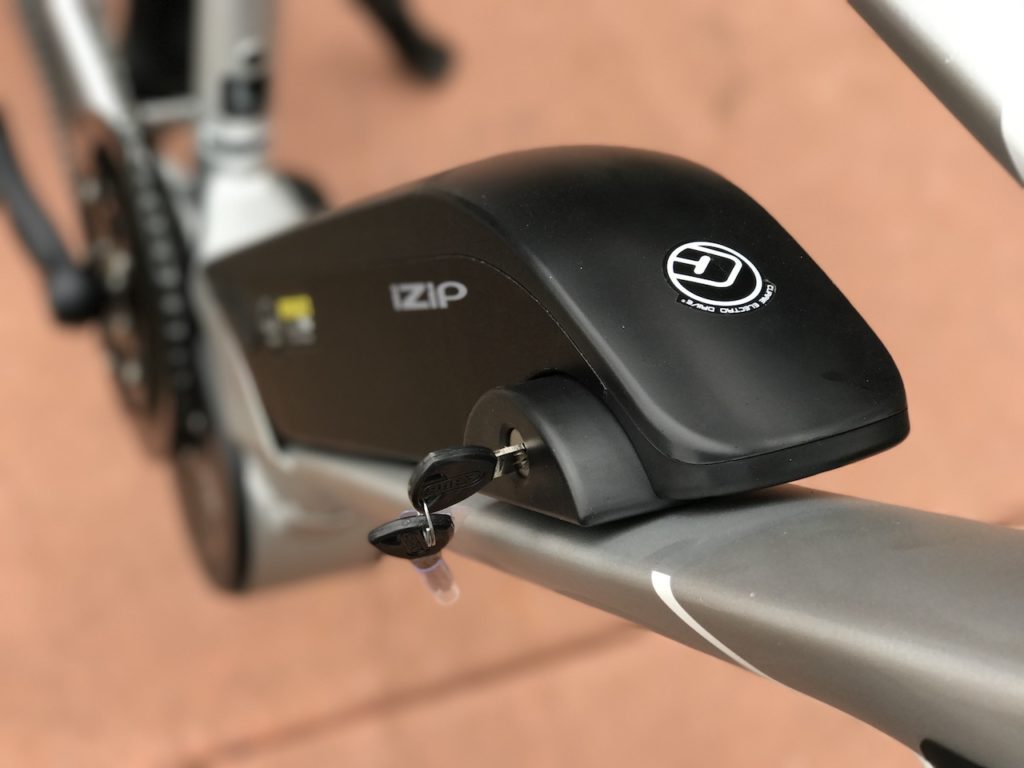
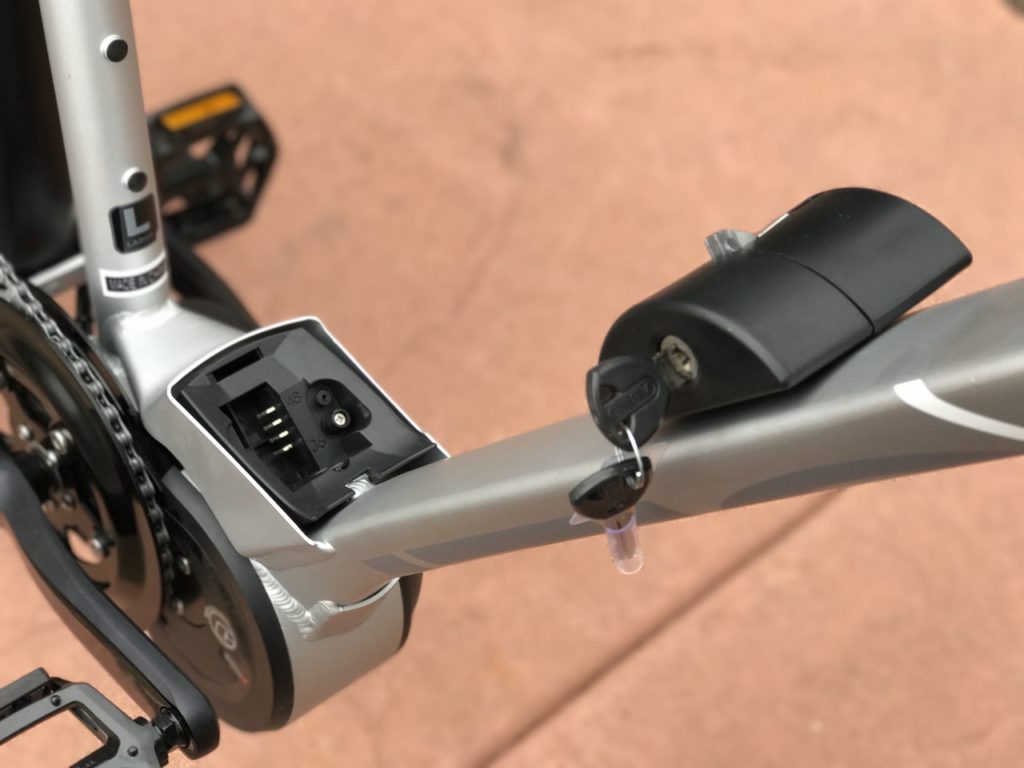
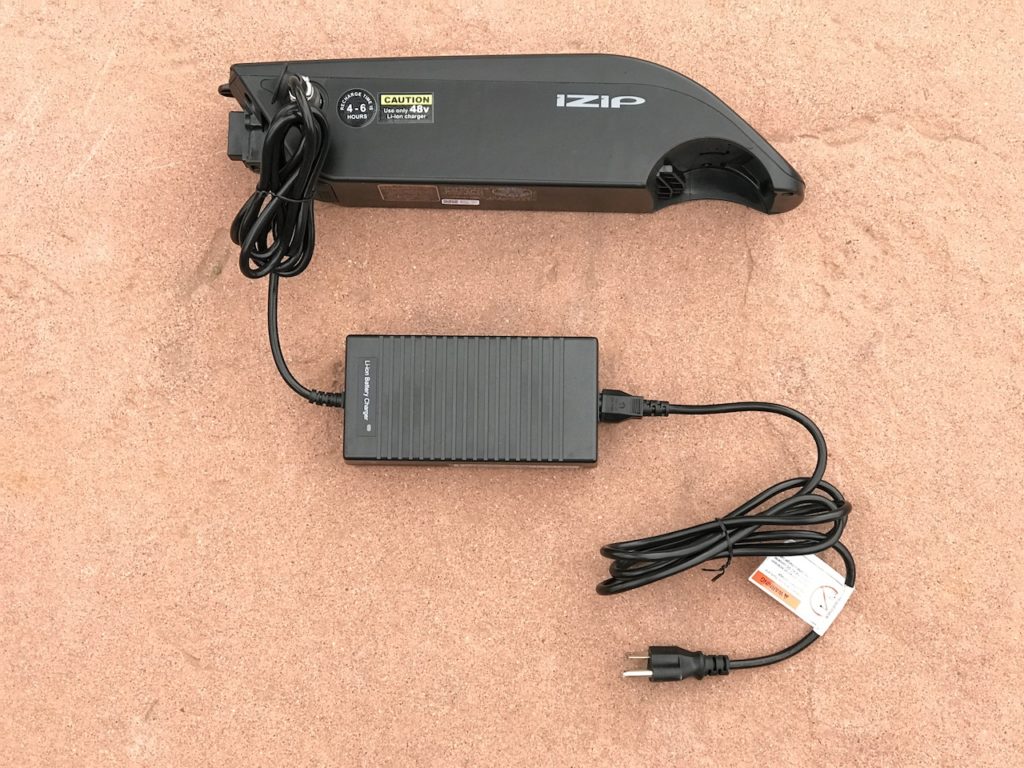
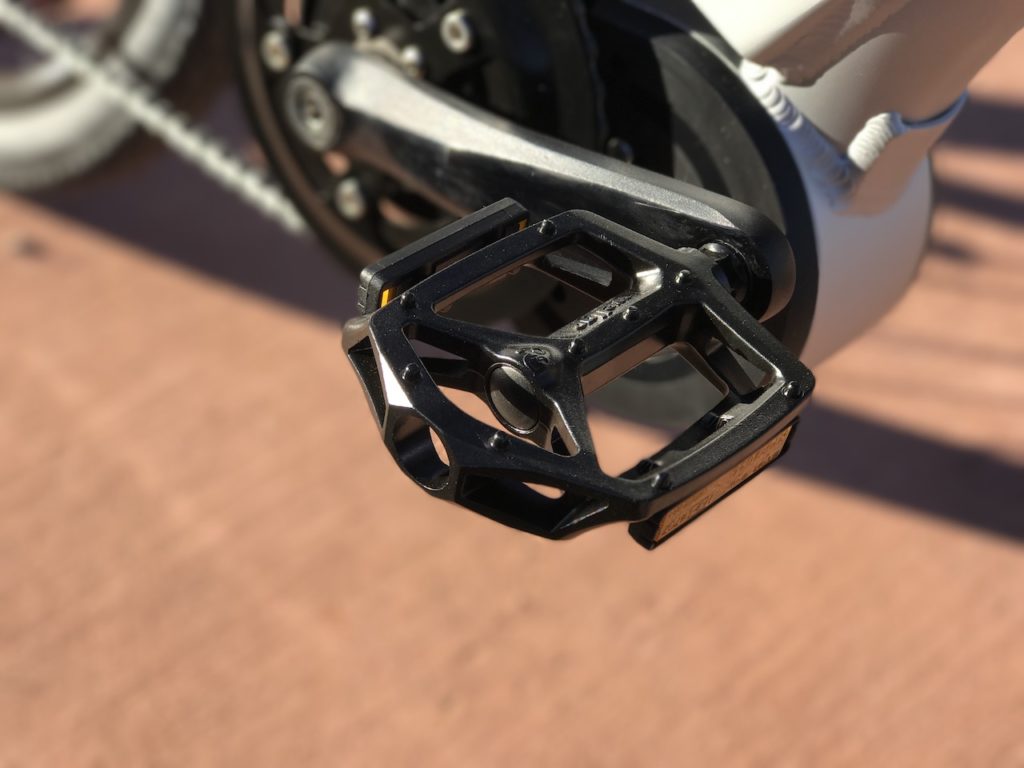
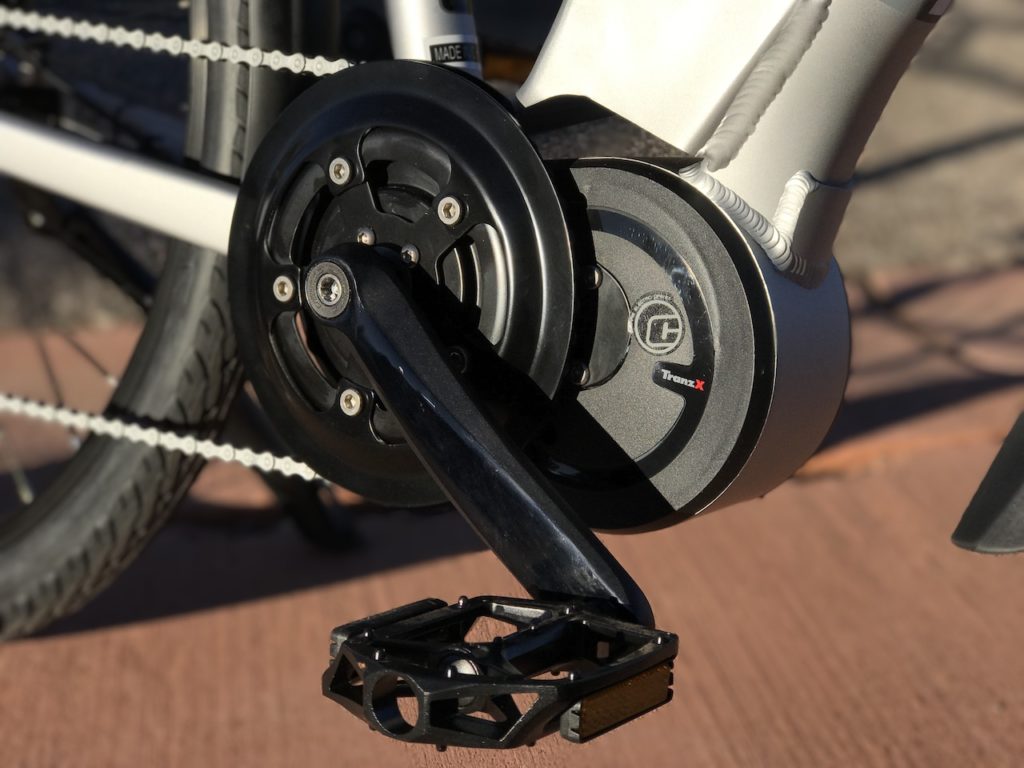
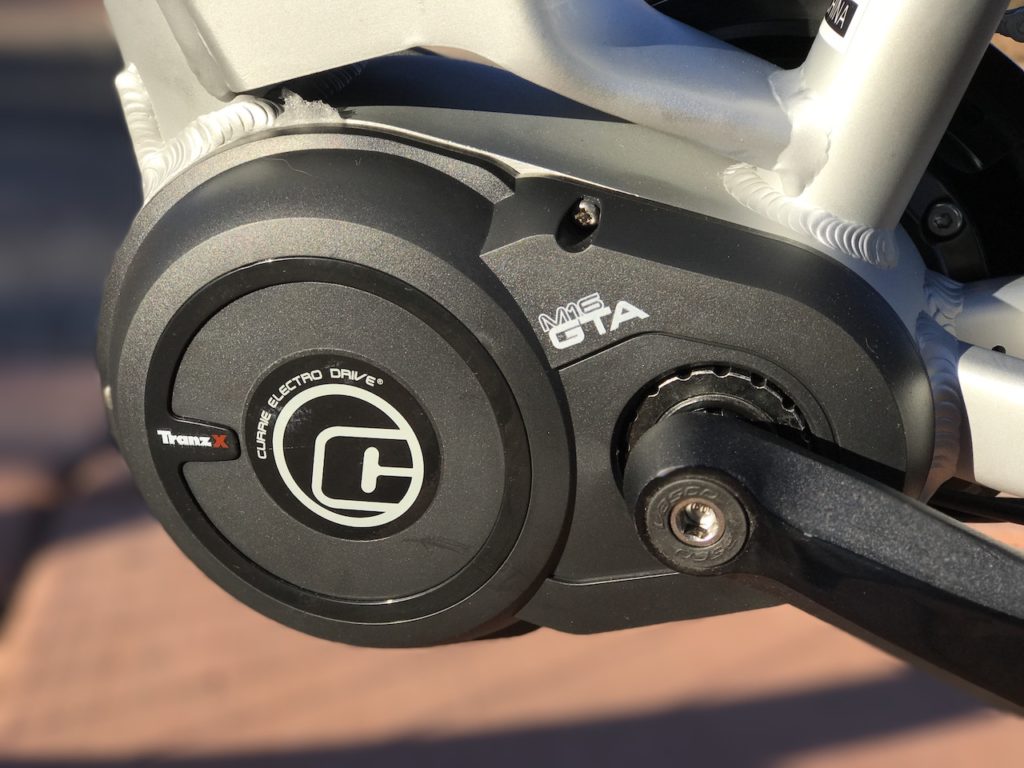
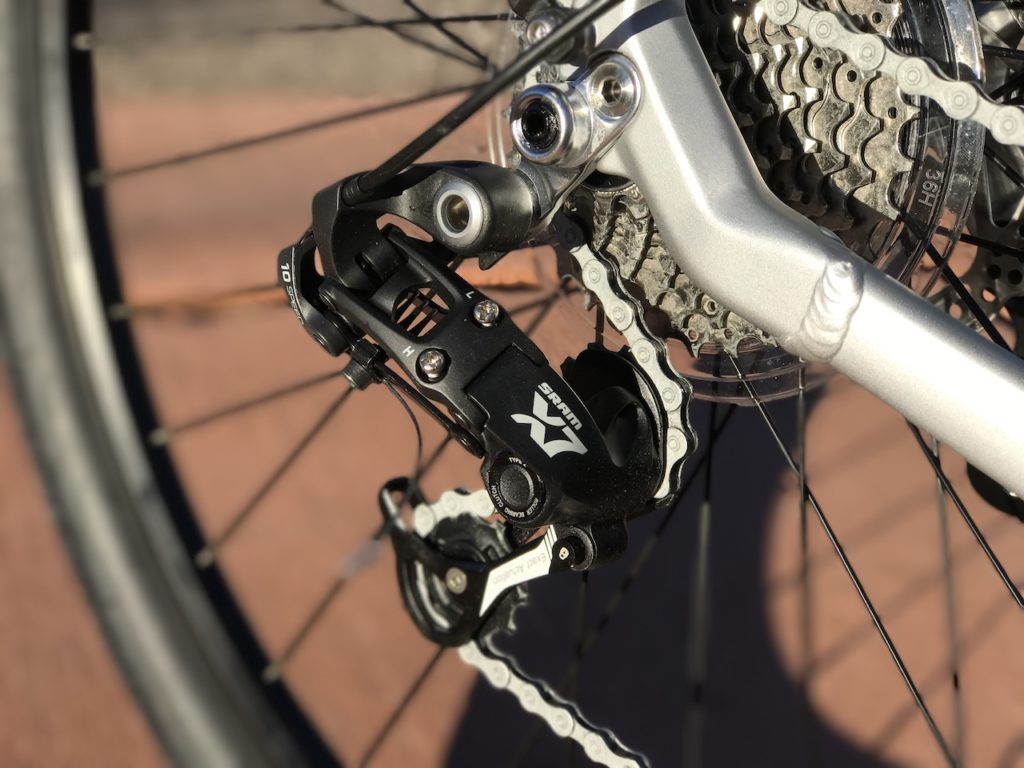
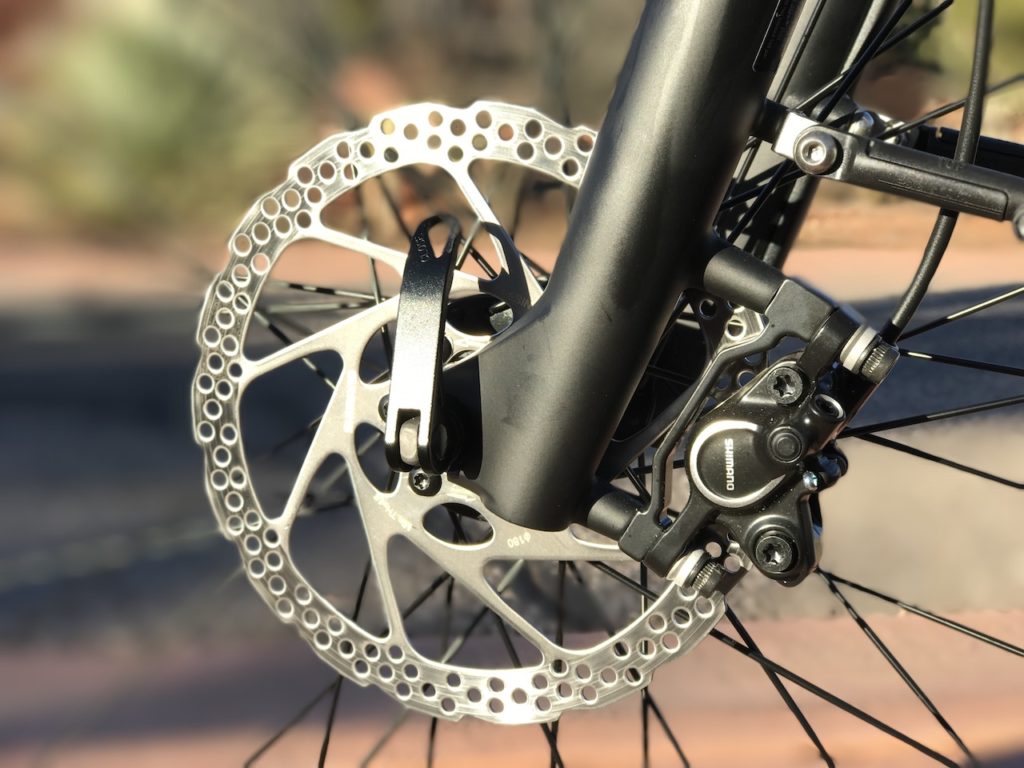
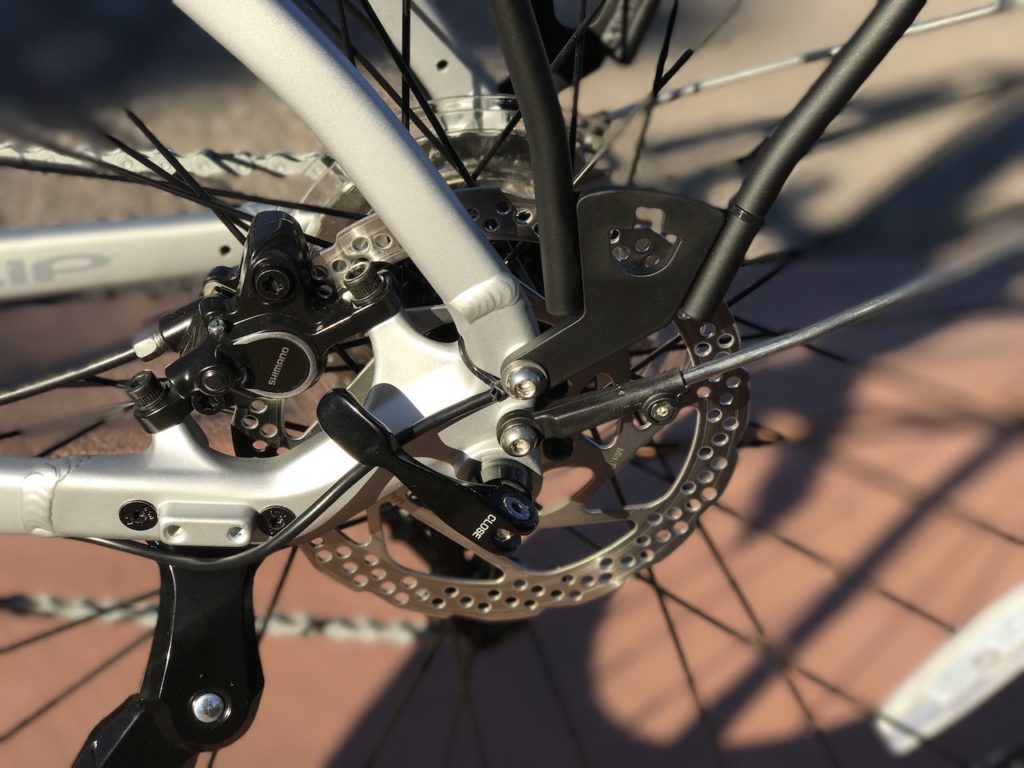
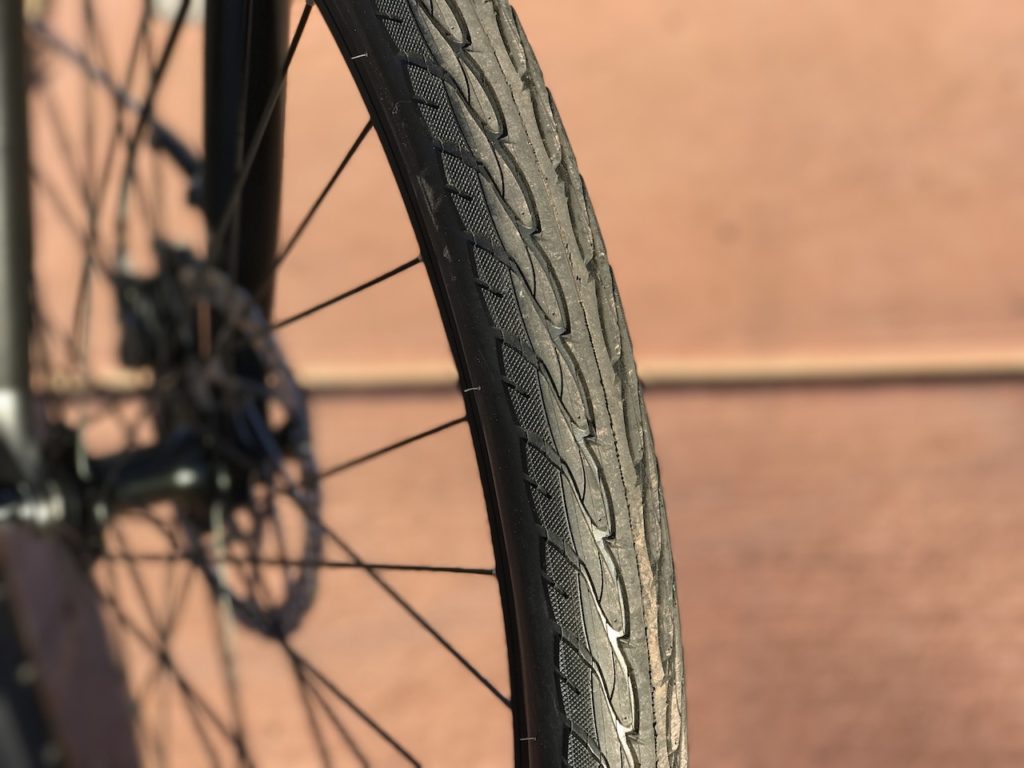
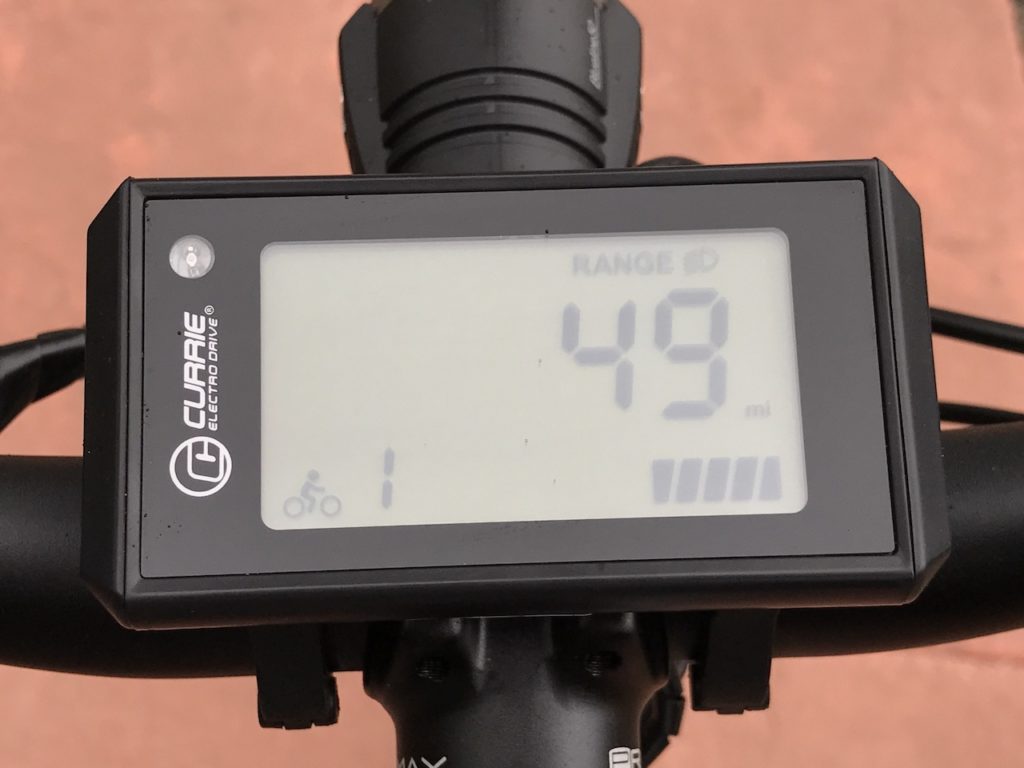

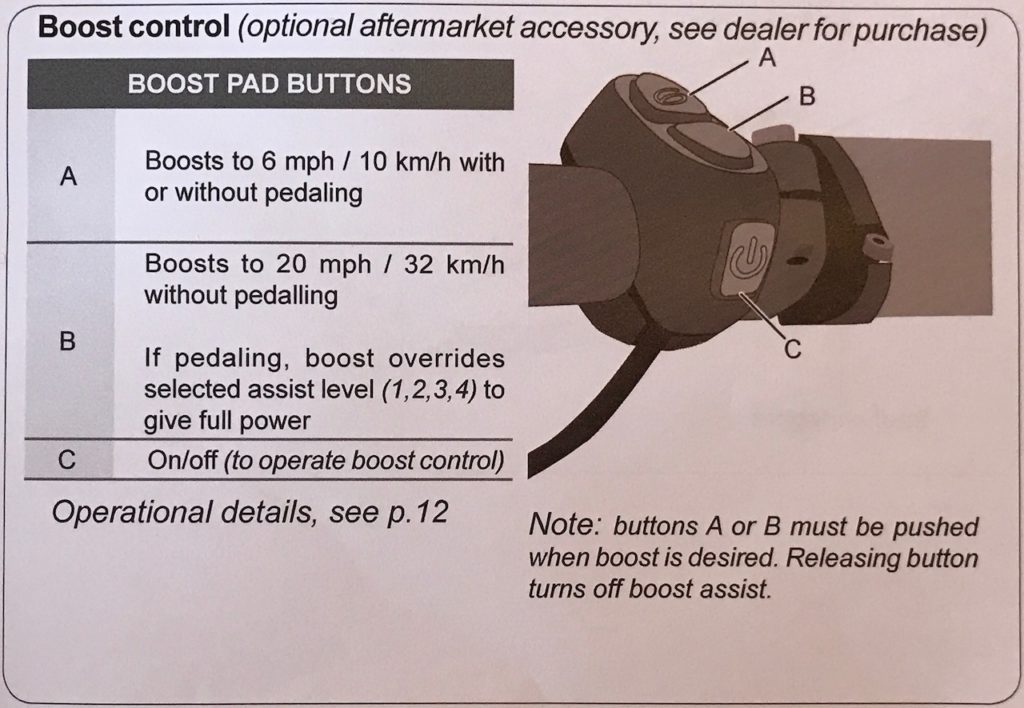
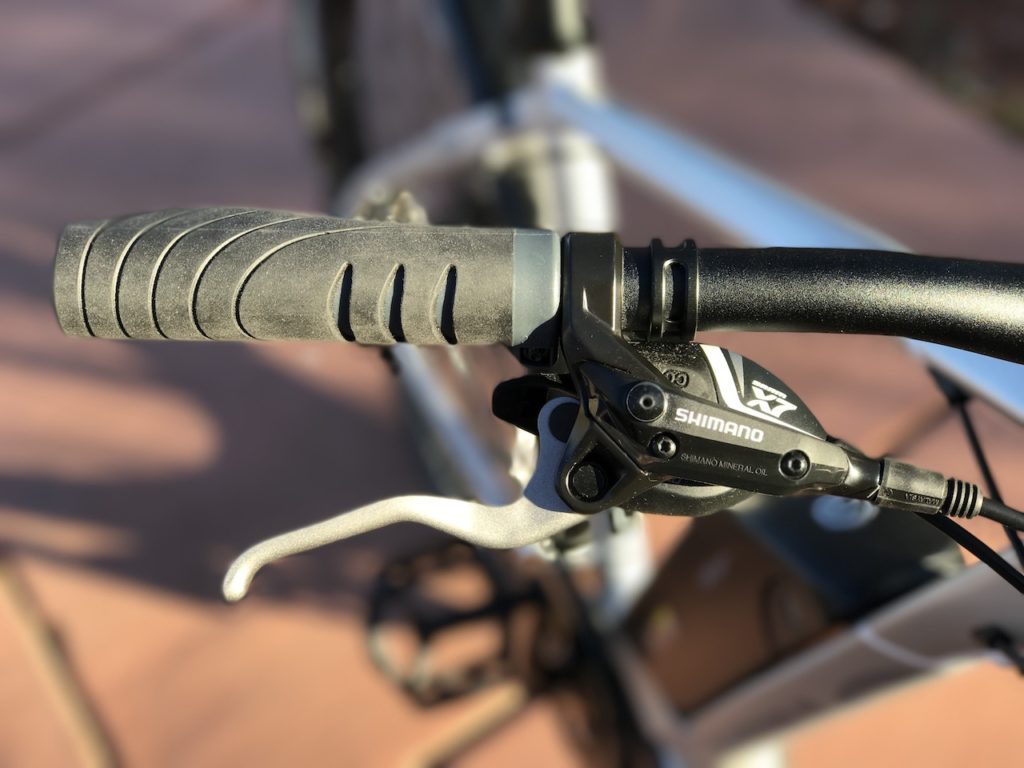
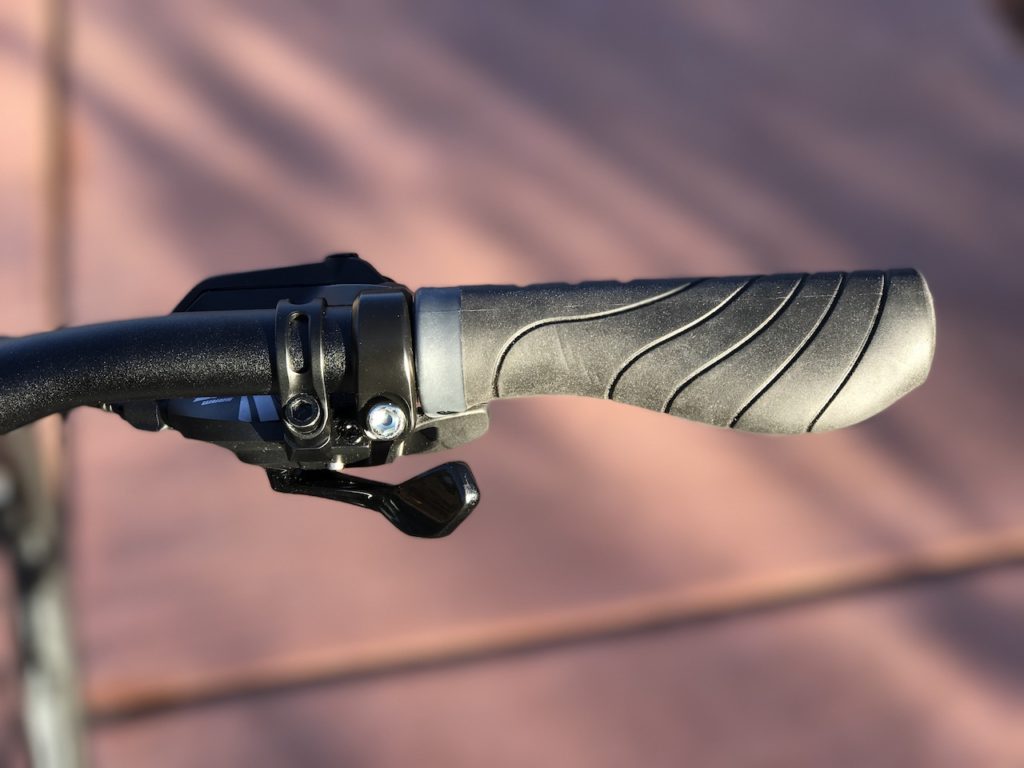
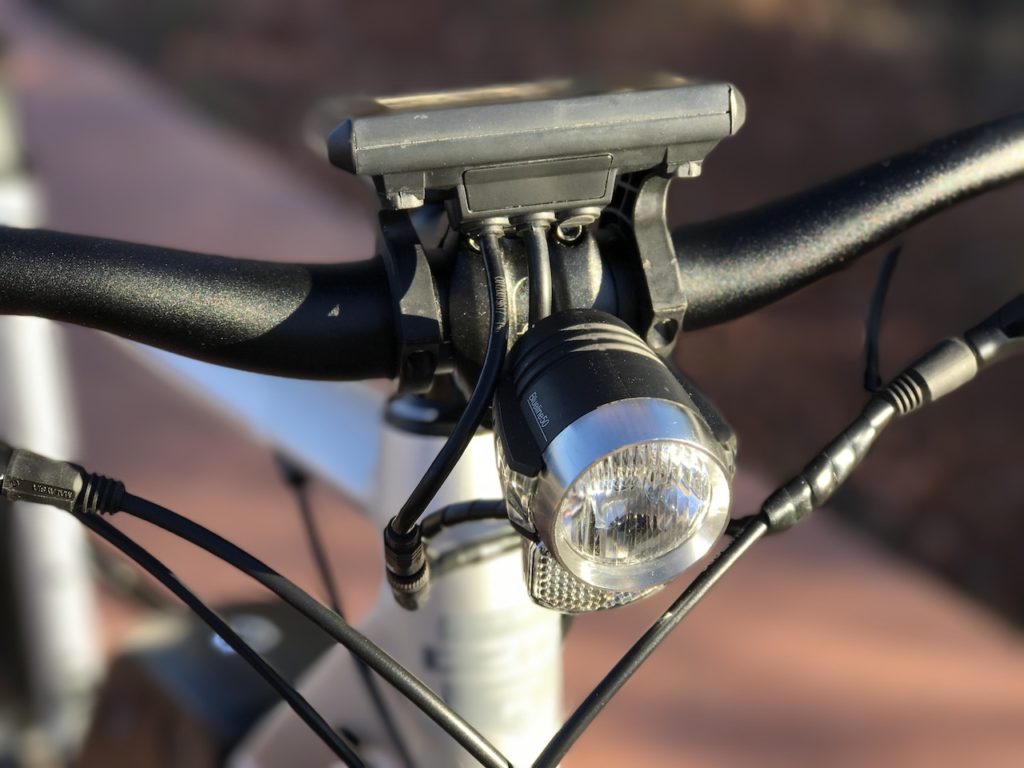
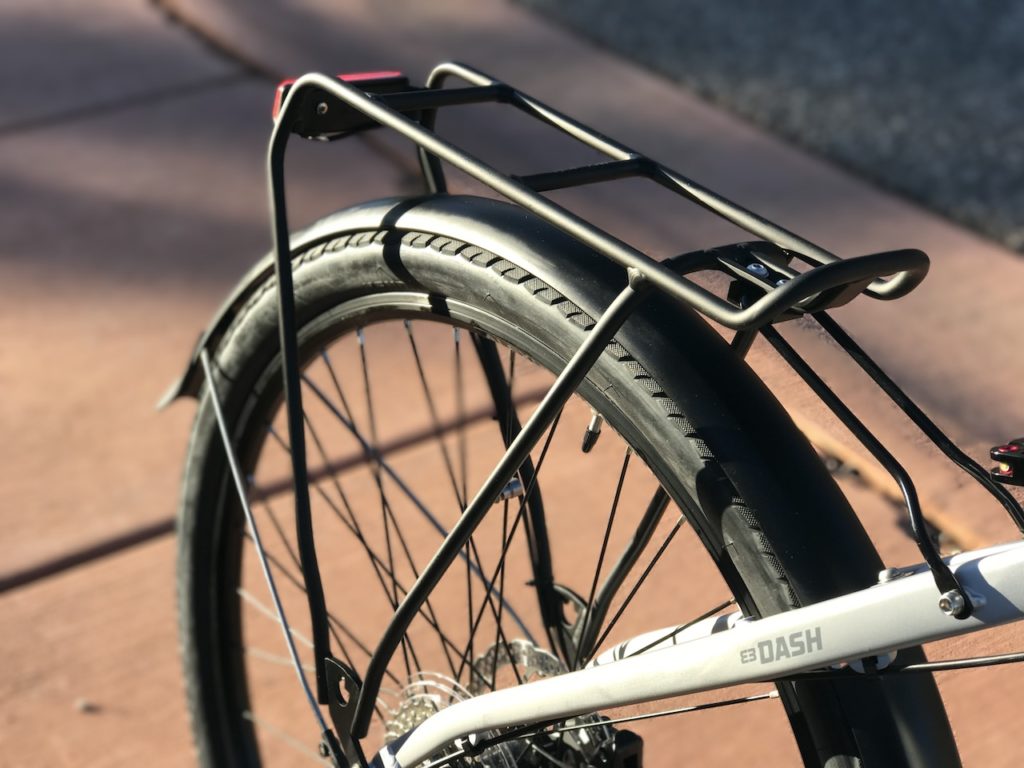
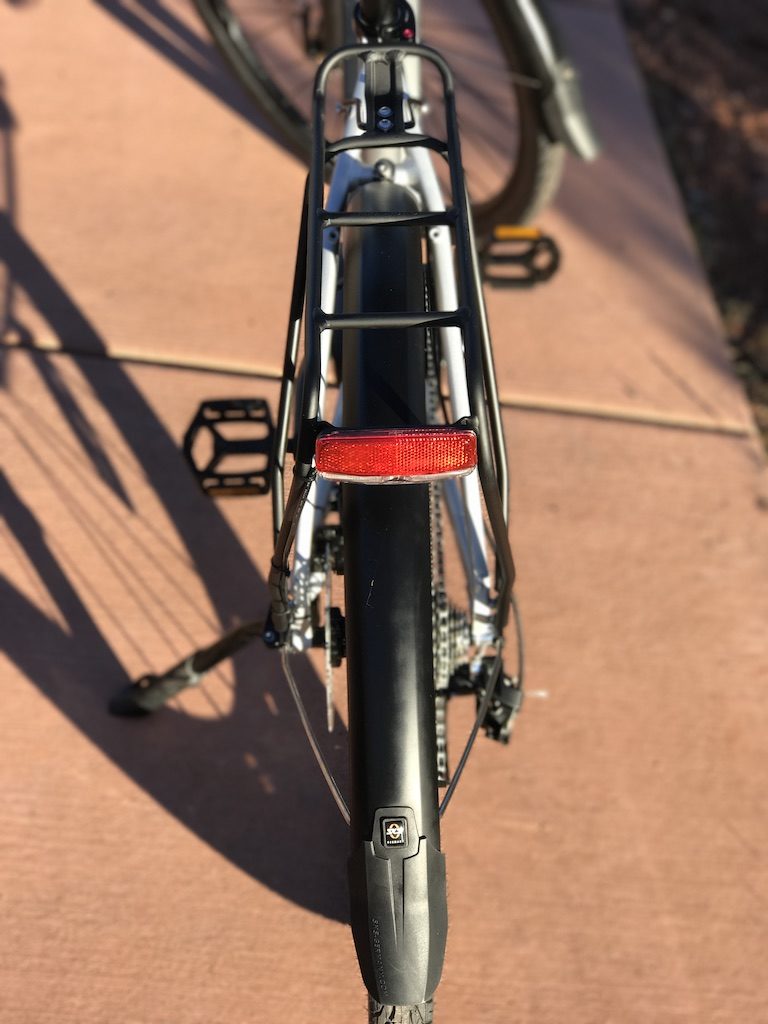
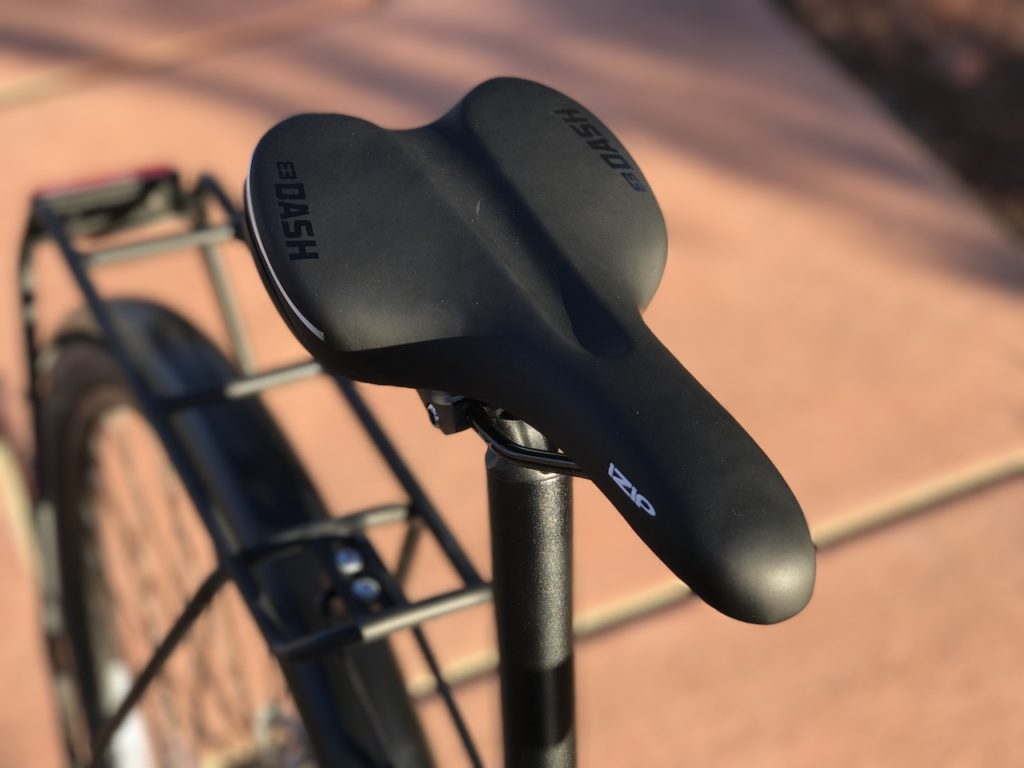
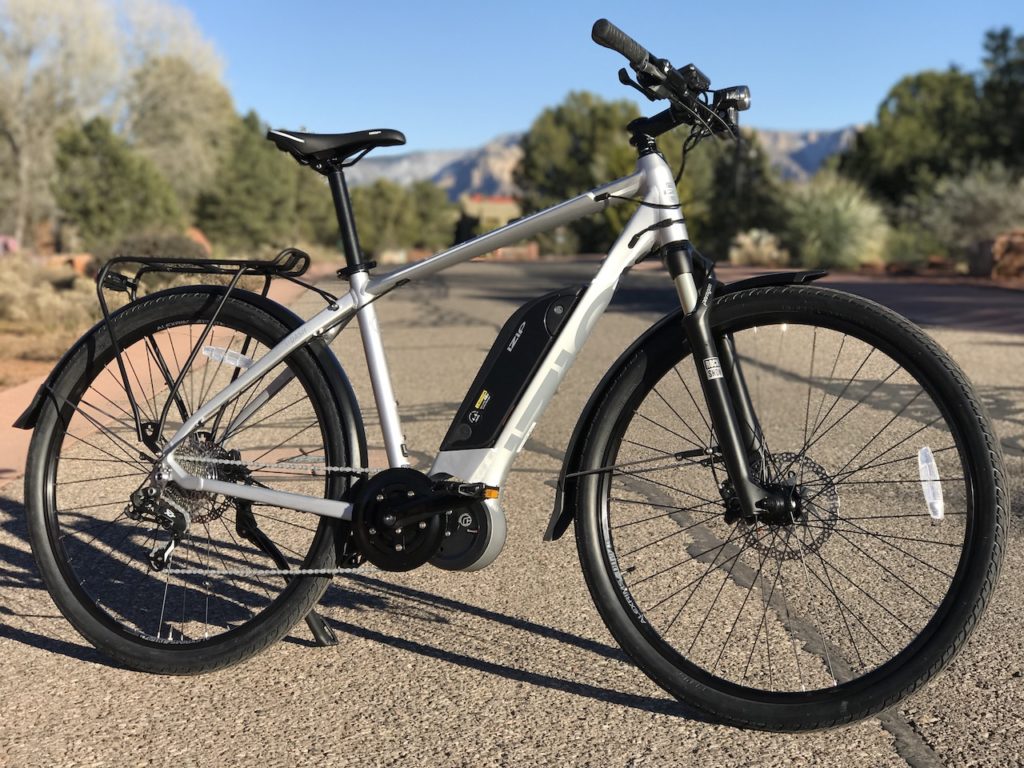
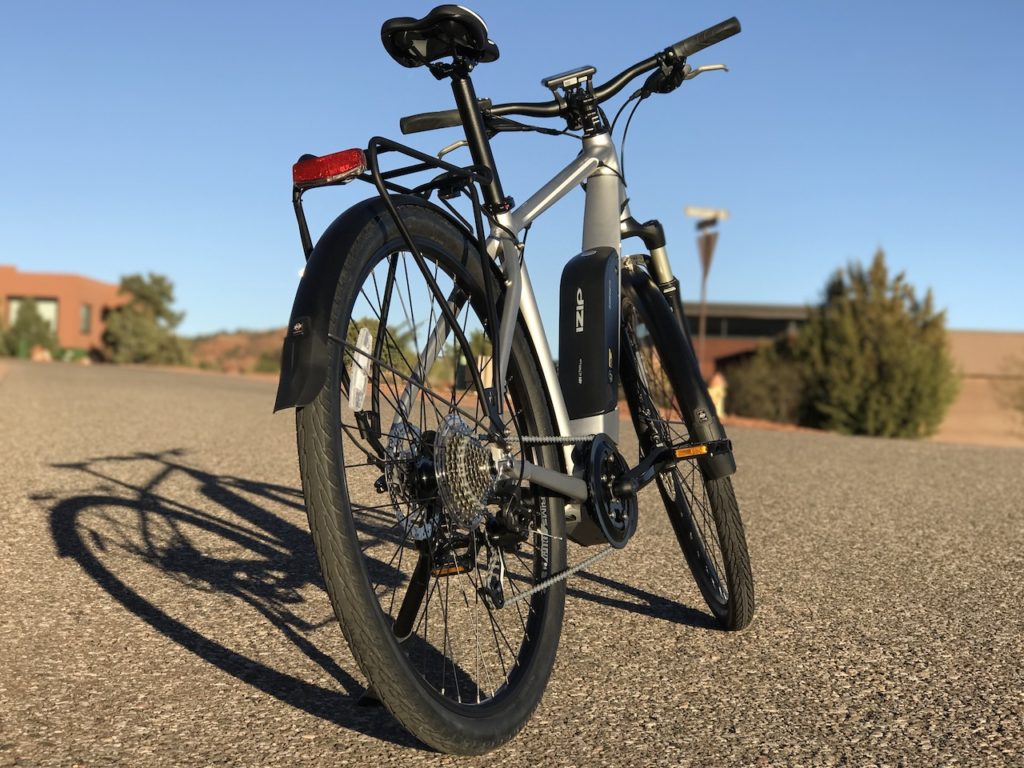



Looks to be a very nice ebike! I’m surprised it claims 28 mph from a 350 watt motor. I have two very good 48 volt 1000 watt ebikes that can barely do 28 mph in no wind on the flat with 50 lbs in tires. Perhaps it’s supposed to be KPH?
Hi Al, the IZIP E3 Dash provides assist up to 28 miles per hour. Mid-drive motors do a good job of leveraging the gears of the bike for speed and climbing. There are a number of 350 watt mid drive powered speed pedelecs out there, for instance:
Haibike: https://www.haibike.com/
And there are others.
I see, Then the question is (what most peeps really want to know) How fast does it go on a flat, no wind 50 lbs tires? I’d guess it probably goes 20 mph. If so the way it’s stated is misleading especially to newbies who can’t calculate all the marketing ruses.
Al, I have been riding it for many days and it goes 28 miles per hour.
That’s GREAT!! Me thinks the system is more than 350 watts but that’s OK and doesn’t matter too much. I need a bike that can go that fast and I suppose others do too. 🙂
Al,
No, all it takes is 350 Watts to go 28mph on flats, so long as it’s a mid-drive and works through your gears. That lets the motor work closer to optimal power RPMs.
I have a 500 Watt iZip rear hub drive, AND a 350 Watt Haibike Xduro FS RS with mid drive. BOTH can do 28 mph on a flat easily, if I am pedaling with mid effort.
Who knows, maybe the 500 watt bike could go faster, but the motor is governed to shut off assist at 28.
(For the uber bike geeks out there, yes, my Haibike was 20mph-governed as stock, but I have the hack. Al, the hack doesn’t change the 350W, just removes the motor shut-off at 20mph.) And that’s with full suspension, and fattish knobby tires nowhere near 50psi..
I’ve had mid drives for over a decade and hubs. I still think its using more than 350 watts. It doesn’t’t matter much and I’m not sure about that but it takes a LOT of power to buck the air resistance at 28 mph. Here’s a report on one of my bikes = the Optibike 1100R with an 1100watt motor that tests to go 32 mph when new; https://electricbikereport.com/electric-bike-review-optibike-1100r/ Maybe somehow the iZip is more efficient but doubt it. We should have some races!
Maybe this will be the birth of ‘Formula eBike!’
Additionally, a 250 watt center drive, when ridden by someone who knows how to shift for optimal gearing, can perform as well as, or better than, a 500 watt hub motor. The side benefit of this is incredible range. My Haibike with a Yamaha mid-drive and a 396 watt hour battery can easily go 60 miles on a charge, and out climb any hub motor, including my 500 watt ST2S.
Do you think this Currie mid-drive motor will be as reliable as a Bosch mid-drive motor?
Tim, My wife has an iZip with a mid drive, and I have the Bosch on a Haibike. My answer for you about reliability is: probably not. Bosch earned their reputation for quality. But Currie does stand behind its products.
The main point I want to mention is that the Bosch systems have the control setting, then THREE sensors to set motor power:
1) Cadence sensor (are you pedaling)
2) Bike speed sensor
3) Torque sensor. (Your legs torque output)
Currie (and Yamaha, and others) only has TWO sensors:
1) Cadence
2) Bike Speed
This makes a big difference in the quality of the power assist. The Currie system just determines that you are pedaling a moving bike, then delivers whatever power you set at the control unit. It’s sort-of binary, either on or off. You can trick a bike like this by just moving the pedals, but barely applying any torque at all, and the bike will joyfully apply full power to assist. If you stop or start pedaling, the motor will lag you by a half a second or so, and turn the motor on/off.
The Bosch system takes it one step further. It senses how hard you are pedaling, and multiplies your force with a proportionally matched force from the motor. If you are pedaling, but just barely pushing the pedals, it will also barely push. If you step into it and push hard, the Bosch system will increase its power to match. Also, the Bosch system has much less lag, so the instant you let off the pedals, the motor backs off too. Because of this, it feels like YOU are superman. It doesn’t feel like you are on an e-bike with a surging motor. Your muscles control how much power you put in, as well as the bike.
That level of responsiveness is not needed for street riding and getting a gallon of milk at the store, but it IS very useful mountain biking, and any where technical precision is wanted.
That’s why I ride a hub motor bike around town, and a Bosch system in the hills.
This is an excellent comparison/description–Thanks!!
Derek,
Good points, however, I must correct you on your statements about Yamaha and Currie.
Yamaha:
Their mid-drive indeed has three sensors:
1. a torque sensor that detects pedaling power.
2. a speed sensor that detects the bicycle’s speed.
3. a crank sensor that detects the number of rotations through pedaling.
They also use this to provide the rider with cadence information- something that Bosch should emulate.
Yamaha also provides temperature information.
Bosch brought their first electric bike system to market in 2010, Yamaha in 1993.
Currie:
Not only does my Currie Eflow Nitro also have a torque sensor, it is integrated to the motor controller, and resets the zero-point ever time it is turned on. This is done by sitting on the bike before turning it on (feet not on pedals). It measures the riders weight and adjusts the zero-point so that the bike is neither sluggish nor jumpy (overly sensitive).
All of these newer systems are excellent, and their owners will be very loyal. However, since Bosch refused to honor a warranty for me, I will never buy their products again.
There is a new sensor in town…my Stromer ST2S additionally features an inclination sensor, but that is a different topic.
As for the “best mid-drive”, that is a wide topic, and growing every day. A “newcomer” that I was very impressed with was the German made Brose. It uses a belt drive and is amazingly quiet.
To bring the topic back to Currie reliability, my Currie Efolw Nitro has performed flawlessly for 18 months, and is a very good value at todays prices.
Thanks for the update.
I wonder why they say that the welds are smoothed out? looks like they only smoothed out one weld.. for me I think this would be a totally cool bike if they had ground the welds all the way down and bondo it and finish it… would make it look like a million bucks… now it just looks unfinished .. too me anyway. Ron
To some of us an excellent weld is a thing of beauty to be seen and appreciated. Ducati is known for highly visible but excellent welds on the tubular frames.
Yep Yep to each their own, just looks unfinished too me..